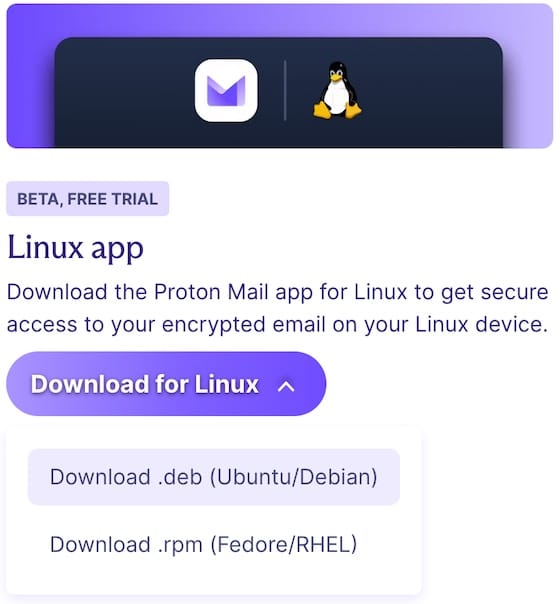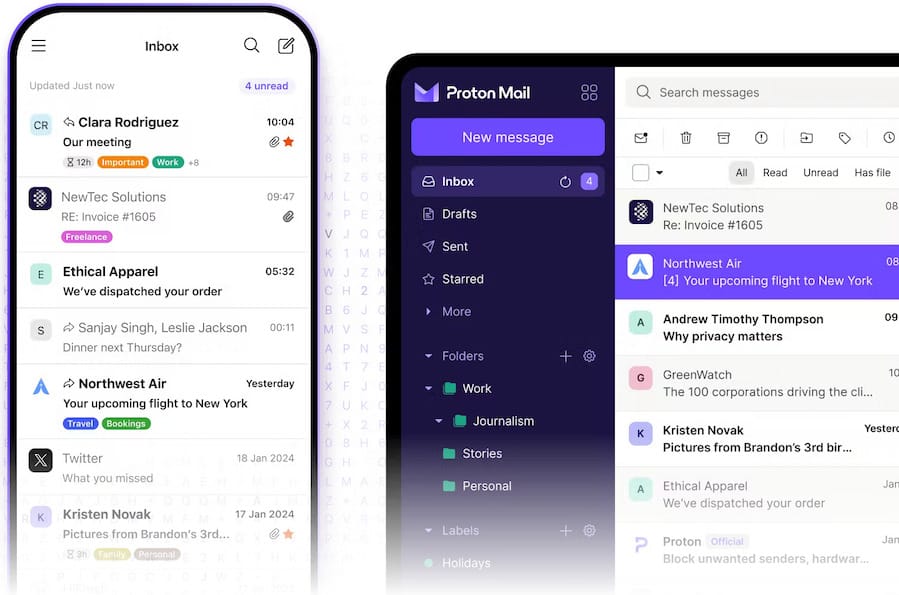How To Install Proton Mail on Manjaro

Privacy-conscious users worldwide have embraced Proton Mail as their go-to secure email solution. For Manjaro Linux users, accessing this encrypted email service requires specific installation methods that differ from mainstream operating systems. This comprehensive guide walks you through multiple installation approaches, ensuring you can enjoy Proton Mail’s robust security features on your Manjaro system.
Manjaro, being an Arch-based distribution, offers unique advantages for installing Proton Mail applications. The rolling release model provides access to the latest software packages, while the Arch User Repository (AUR) expands installation options significantly. Whether you prefer the standalone desktop application or need Bridge integration with your favorite email client, this guide covers every possible scenario.
Understanding the available Proton Mail options is crucial before diving into installation procedures. Each method serves different user needs and technical requirements. By the end of this article, you’ll have a fully functional Proton Mail setup tailored to your specific workflow and security preferences.
Understanding Proton Mail Options for Linux
Proton Mail Desktop App vs Proton Mail Bridge
Two primary Proton Mail applications serve Linux users with distinct purposes and capabilities. The Proton Mail Desktop App functions as a standalone application providing direct access to your encrypted email account. This electron-based application mirrors the web interface functionality while offering offline access and enhanced system integration.
Proton Mail Bridge serves a fundamentally different purpose by acting as a local IMAP/SMTP server. Bridge enables third-party email clients like Thunderbird, Evolution, or Mutt to connect securely to Proton Mail servers. This approach maintains end-to-end encryption while preserving your preferred email client workflow.
The key difference lies in account requirements and functionality scope. The desktop app works with both free and paid Proton Mail accounts, offering a familiar web-like interface. Bridge requires a paid Proton Mail subscription but provides flexibility to use any IMAP-compatible email client while maintaining encryption standards.
System Requirements and Compatibility
Manjaro’s Arch foundation ensures excellent compatibility with both Proton Mail applications. Your system should have at least 4GB of RAM and 500MB of available storage space for optimal performance. The desktop app requires modern OpenGL support and hardware acceleration capabilities for smooth operation.
Bridge installation demands additional considerations including keychain manager support. GNOME Keyring, Pass password manager, or similar credential storage systems are essential for secure Bridge operation. Network configuration flexibility is also important since Bridge creates local server instances for email client connections.
Rolling release update cycles in Manjaro occasionally cause compatibility issues with electron-based applications. Monitoring package versions and maintaining updated system libraries prevents most stability problems during normal operation.
Method 1: Installing Proton Mail Desktop App via AUR
Prerequisites and Preparation
The Arch User Repository offers the most straightforward installation path for Manjaro users. Begin by enabling AUR support in your package manager if not already configured. Open Pamac (Add/Remove Software) and navigate to preferences to enable AUR support.
Installing an AUR helper streamlines package management and dependency resolution. Popular options include yay, paru, and trizen, each offering slightly different features and interfaces. Choose based on your comfort level with command-line operations and desired automation features.
Update your system packages before proceeding with any AUR installation:
sudo pacman -SyuThis ensures compatibility with the latest system libraries and prevents dependency conflicts during the build process.
Step-by-Step AUR Installation
Using Pamac GUI
Launch Pamac and click the search icon to locate Proton Mail packages. Type “proton-mail” in the search field and enable the AUR toggle if search results appear empty initially. The official package typically appears as proton-mail with community maintainer attribution.
Select the package and click Install to begin the process. Pamac automatically handles dependency resolution and compilation requirements. The build process downloads source code and compiles it locally, which may take several minutes depending on your system specifications.
Monitor the terminal output during compilation for any error messages or missing dependencies. Pamac usually resolves these automatically, but manual intervention might be necessary for uncommon library requirements.
Using Command Line AUR Helpers
For command-line enthusiasts, AUR helpers provide efficient installation methods with greater control over the build process:
yay -S proton-mailOr using paru:
paru -S proton-mailBoth commands automatically handle dependency checking, source code downloading, and compilation processes. The -S flag performs a synchronization install, ensuring your local package database reflects the current AUR state.
Review PKGBUILD contents before confirming installation when prompted. This security practice helps identify potentially malicious code or unusual compilation requirements.
Package Verification and Security
AUR packages require careful verification since they originate from community contributors rather than official Manjaro repositories. Check the package popularity, last updated date, and maintainer reputation before installing. Packages with regular updates and high vote counts generally indicate active maintenance and community trust.
Examine the PKGBUILD file contents to understand what the package does during installation. Look for suspicious network connections, unusual file system access, or dependency requirements that seem unrelated to Proton Mail functionality.
Consider the maintainer’s other packages and community reputation. Established contributors with multiple well-maintained packages typically provide more reliable software than new or single-package maintainers.
Post-Installation Setup
Once installation completes, launch Proton Mail from your application menu or by running proton-mail in a terminal. The first launch triggers initial configuration and account setup procedures.
Log in with your Proton Mail credentials and configure two-factor authentication if enabled on your account. The application automatically configures system tray integration and desktop notifications based on your desktop environment.
Customize interface preferences including theme selection, notification settings, and startup behavior according to your workflow requirements. The application integrates seamlessly with most popular desktop environments including KDE Plasma, GNOME, and XFCE.
Method 2: Installing via Snap Package
Installing Snapd on Manjaro
Snap packages provide containerized applications with automatic dependency management and security isolation. Manjaro doesn’t include snapd by default, requiring manual installation before accessing snap applications.
Install snapd using your preferred package manager:
sudo pacman -S snapdEnable the snapd socket service to allow snap package management:
sudo systemctl enable --now snapd.socketCreate the traditional snap directory symlink for compatibility with snap applications expecting standard paths:
sudo ln -s /var/lib/snapd/snap /snapRestart your system to ensure all snap services initialize properly and environment variables update correctly.
Installing Proton Mail via Snap
With snapd configured, install Proton Mail using the snap command:
sudo snap install proton-mailSnap packages run in confined environments with restricted system access for enhanced security. This isolation occasionally causes integration issues with desktop environments or system services.
The snap version typically updates automatically through the snap refresh mechanism, ensuring you receive security updates and feature additions without manual intervention.
Snap-Specific Configuration
Snap confinement may restrict certain desktop integration features. Grant additional permissions if needed:
sudo snap connect proton-mail:password-manager-serviceConfigure snap refresh behavior to control automatic updates:
sudo snap set system refresh.timer=fri,23:00-01:00This schedules updates for Friday nights, minimizing disruption during work hours while maintaining security update currency.
Method 3: Installing Proton Mail Bridge
Understanding Proton Mail Bridge Purpose
Proton Mail Bridge transforms your Proton Mail account into a local IMAP/SMTP server accessible by any email client. This architecture preserves end-to-end encryption while enabling your favorite email application to manage Proton Mail messages seamlessly.
Bridge supports popular email clients including Thunderbird, Evolution, Mutt, Claws Mail, and even Microsoft Outlook running under Wine. The local server approach ensures zero-knowledge encryption principles remain intact throughout the email handling process.
Important requirement: Bridge functionality requires a paid Proton Mail subscription (Mail Plus, Proton Unlimited, or Business plans). Free accounts cannot use Bridge services due to the additional server resources required for local IMAP/SMTP operations.
Installation Methods for Bridge
Via AUR Package
The AUR provides the most reliable Bridge installation method for Manjaro users:
yay -S protonmail-bridgeThis package includes all necessary dependencies and configures Bridge services appropriately for Arch-based systems. The compilation process builds Bridge from official Proton sources with Manjaro-specific optimizations.
Via Snap Package
Install Bridge through snap packages for containerized operation:
sudo snap install protonmail-bridgeConnect necessary services for keychain integration:
sudo snap connect protonmail-bridge:password-manager-serviceSnap packaging occasionally causes keychain access issues requiring manual permission configuration or alternative password managers.
Manual PKGBUILD Installation
Advanced users can build Bridge manually for maximum control over compilation options:
mkdir /tmp/proton-bridge-build && cd /tmp/proton-bridge-build
wget https://aur.archlinux.org/cgit/aur.git/snapshot/protonmail-bridge.tar.gz
tar -xzf protonmail-bridge.tar.gz
cd protonmail-bridge
makepkg -siThis approach allows PKGBUILD modification for custom compilation flags or dependency versions if needed for specialized environments.
Bridge Configuration and Setup
Prerequisites
Install a compatible keychain manager before running Bridge. GNOME Keyring works reliably across most desktop environments:
sudo pacman -S gnome-keyringFor terminal-focused users, the Pass password manager provides excellent command-line integration:
sudo pacman -S passEnsure the keychain service starts automatically with your desktop session for seamless Bridge authentication.
Initial Bridge Setup
Launch Bridge from your application menu or by running protonmail-bridge in a terminal. The first startup creates a system tray icon and opens the configuration interface.
Log in with your Proton Mail credentials when prompted. Bridge generates app-specific passwords for each email client connection, enhancing security by isolating client access from your main account credentials.
Configure Bridge network settings if your system uses non-standard network configurations. Most users can accept default settings, but proxy environments or restrictive firewalls may require custom configuration.
Email Client Integration
Bridge provides IMAP and SMTP server details for email client configuration. Typical settings include:
- IMAP Server: 127.0.0.1:1143
- SMTP Server: 127.0.0.1:1025
- Security: STARTTLS
- Authentication: Use Bridge-generated app passwords
Each email client requires slightly different configuration procedures, but these core settings remain consistent across applications.
Method 4: Converting and Installing DEB Package
Understanding DEB to Arch Conversion
Proton provides official DEB packages for Debian and Ubuntu systems but doesn’t maintain native Arch packages. Converting DEB packages to Arch format enables installation on Manjaro with some limitations and potential compatibility issues.
Package conversion tools like debtap automate the translation process between package formats. However, dependency mapping between distributions isn’t always perfect, potentially causing runtime issues or missing functionality.
This method serves as a backup option when AUR packages are unavailable or experiencing maintenance issues. Primary installation methods (AUR or snap) are generally more reliable for long-term use.
Manual DEB Installation Process
Downloading Official DEB Package
Visit the official Proton Mail download page and download the latest DEB package for your system architecture (typically amd64). Verify the package integrity using provided checksums:
sha256sum proton-mail_1.0.0_amd64.debCompare the output with the official checksum to ensure package authenticity and prevent corrupted downloads.

Using Debtap for Conversion
Install debtap from AUR for DEB to Arch package conversion:
yay -S debtapUpdate debtap’s package database:
sudo debtap -uConvert the DEB package to Arch format:
debtap proton-mail_1.0.0_amd64.debFollow the prompts to configure package metadata and dependency mapping. Install the resulting package with pacman:
sudo pacman -U proton-mail-1.0.0-1-x86_64.pkg.tar.xzAlternative Conversion Methods
The alien package provides another conversion option, though it’s less optimized for Arch systems:
sudo pacman -S alien
alien -to-tgz proton-mail_1.0.0_amd64.debExtract and manually install the resulting archive, though this approach requires more manual configuration and may miss important system integration elements.
Configuration and Initial Setup
First-Time Application Launch
Desktop App Configuration
Launch the Proton Mail desktop application and complete the initial setup wizard. Enter your account credentials and configure two-factor authentication if enabled on your Proton account.
Customize the interface theme to match your desktop environment preferences. Dark themes generally provide better battery life on laptops and reduce eye strain during extended email sessions.
Configure notification preferences including new message alerts, desktop notifications, and sound preferences. Most users prefer subtle notifications that don’t interrupt focused work sessions.

Bridge-Specific Configuration
Bridge requires more extensive configuration for email client integration. Generate app-specific passwords for each email client you plan to use with your Proton Mail account.
Configure your email client with Bridge-provided server settings. Each client uses the same server addresses but requires unique authentication credentials generated by Bridge.
Test email sending and receiving functionality after client configuration to ensure proper Bridge operation and message synchronization.
System Integration
Configure Bridge or the desktop app to start automatically with your desktop session. This ensures immediate email access without manual application launching.
Most desktop environments provide session startup configuration through system settings. Add the Proton Mail application to your startup programs list for seamless integration.
Configure desktop environment-specific features like system tray integration, global keyboard shortcuts, and notification appearance according to your workflow preferences.
Troubleshooting Common Issues
Installation-Related Problems
AUR Build Failures
Missing dependencies cause the most common AUR build failures. Install base development tools if compilation errors occur:
sudo pacman -S base-develUpdate your mirrorlist if package downloads fail repeatedly:
sudo pacman-mirrors --fasttrackClear package cache if disk space issues prevent compilation:
sudo pacman -SccSnap Package Issues
Snap connectivity problems often resolve with service restarts:
sudo systemctl restart snapd.socket
sudo systemctl restart snapd.serviceCheck snap mount points if applications fail to launch:
sudo mount -t squashfsManually connect interfaces if automatic connection fails:
sudo snap connect proton-mail:desktopRuntime and Configuration Issues
Bridge Application Problems
Bridge startup failures often indicate keychain access issues. Verify keychain service operation:
systemctl --user status gnome-keyring-daemonReset Bridge configuration if persistent authentication failures occur:
rm -rf ~/.config/protonmail-bridgeCheck port availability if Bridge fails to start local servers:
netstat -tlnp | grep :1143
netstat -tlnp | grep :1025Desktop App Issues
Clear application cache for performance issues or corrupted interface elements:
rm -rf ~/.config/Proton\ MailUpdate graphics drivers if rendering issues affect application display. Nvidia users may need proprietary drivers for optimal electron application performance.
Disable hardware acceleration in application settings if video playback or interface rendering causes crashes.
Email Client Integration Problems
Thunderbird Configuration Issues
Thunderbird requires specific SSL/TLS settings for Bridge compatibility. Configure manual server settings rather than automatic discovery for reliable connections.
Disable Thunderbird’s built-in security scanning if it conflicts with Proton Mail’s encryption. Bridge handles all security aspects, making additional scanning unnecessary.
Configure SMTP authentication to use the same credentials as IMAP for consistent Bridge integration.
Bridge Connection Issues
Firewall configuration may block Bridge’s local server ports. Add exceptions for ports 1143 (IMAP) and 1025 (SMTP):
sudo ufw allow 1143
sudo ufw allow 1025Network proxy settings can interfere with Bridge operation. Configure Bridge proxy settings to match your network environment if connectivity issues persist.
DNS resolution problems occasionally affect Bridge startup. Use direct IP addresses (127.0.0.1) rather than localhost in email client configurations for more reliable connections.
Maintenance and Updates
Keeping Proton Mail Updated
AUR Package Updates
Regular system updates typically include AUR package updates when using automated helpers:
yay -SyuMonitor AUR package status for manual update checks:
yay -Qu --aurRebuild packages after major system updates to ensure compatibility with updated system libraries.
Snap Package Updates
Snap packages update automatically by default, but manual updates are available:
sudo snap refresh proton-mailMonitor update history for troubleshooting purposes:
snap changesConfigure update timing to minimize workflow disruption while maintaining security currency.
System Maintenance Best Practices
Regular backups of email data and application configurations prevent data loss during system updates or hardware failures. Export important messages periodically for additional security.
Monitor application performance and resource usage during normal operation. Performance degradation may indicate the need for cache clearing or application reconfiguration.
Keep your Manjaro system updated with regular package updates, but test Proton Mail functionality after major updates to ensure continued compatibility.
Security Considerations and Best Practices
Package Source Verification
Always verify AUR package authenticity before installation by examining PKGBUILD contents and checking maintainer reputation. Avoid packages with unusual network access requirements or suspicious compilation processes.
Use GPG signature verification when available for additional security assurance:
makepkg -s --checkMonitor package update frequency and community feedback for ongoing security assessment of installed packages.
Application Security Setup
Configure Bridge with strong app-specific passwords and rotate them periodically for enhanced security. Each email client should use unique credentials to limit exposure if one client becomes compromised.
Enable all available security features in your Proton Mail account including two-factor authentication, session monitoring, and suspicious activity alerts.
Review and configure local firewall rules to restrict Bridge access to necessary ports and local connections only.
System-Level Security
Regular security updates for your Manjaro system protect both Proton Mail applications and the underlying operating system. Enable automatic security updates for critical system components while maintaining manual control over application updates.
Monitor network traffic for unusual patterns that might indicate security issues or unauthorized access attempts to your encrypted email communications.
Consider full-disk encryption for laptops or portable systems containing sensitive email data to protect against physical security breaches.
Congratulations! You have successfully installed Proton Mail. Thanks for using this tutorial for installing Proton Mail Desktop on Manjaro Linux system. For additional help or useful information, we recommend you check the official Proton Mail website.